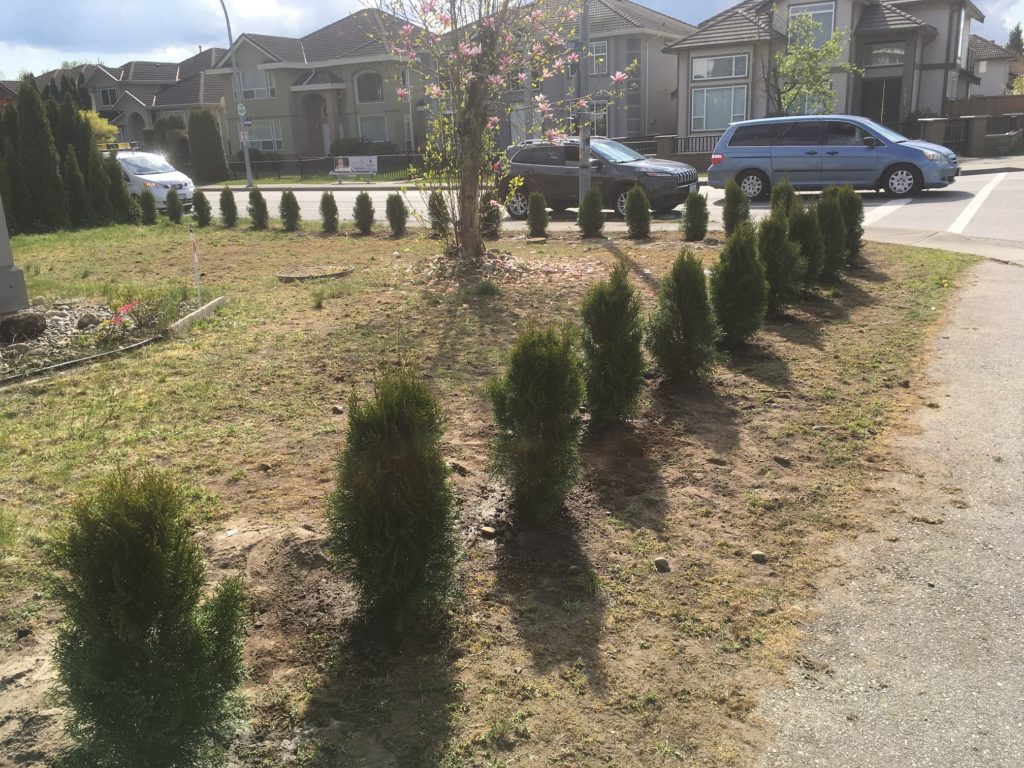Team planting
Today, while I power-raked lawns, raked up the mess and top-dressed with soil, I got to see a family across the street busily planting cedars. And it was fun to see. The father unloaded 3-4′ cedars ($12 each) from the family van and his wife and three kids helped plant them by digging holes. The youngest daughter watered the cedars in.
I’m not a fan of small cedars but I understand how the $12 price tag would be attractive. The cedars will catch up eventually and create a hedge in front of the house.

Backfill correctly
When you plant trees and shrubs, the general rule is to backfill the planting holes with the same site soil. I know that sometimes the backfill soil is first amended by mixing in nice organic soil. But the rule holds: we backfill with the native site soil we dug up when creating our planting hole.
Pro tip: backfill planting holes with native site soil.
Interestingly, people assume that backfilling with fresh new soil from a nearby garden centre is best. It isn’t. Let’s examine why.
Joystick effect
The joystick effect is real because I’ve observed it in the field with my own eyes. It happens after people, like the family above, backfill their planting holes with fresh, fluffy soil purchased at the nearest garden store at hefty retail prices.
Then it rains heavily and the planting holes fill up rapidly. Why? Because water finds it easier to flow into fresh soil, as opposed to the native site soil. As a result, the planting hole becomes waterlogged and the plant turns into a joystick. And you can expect your plant to fall down.
I got to see this on the same day years ago, when I did side-gigs on weekends for rich people in North Vancouver. I was at a hunting lodge to weed and clean-up and, with two babies at home, I did it with a smile.
The owner walked down to the bottom of the property, dug three holes for three six foot cedars (Thuja occidentalis ‘Smaragd’) and backfilled the holes with fresh soil.
Then it rained, and rained. A few hours later, all three cedars were on the ground like joysticks. This was because the water found it much easier to penetrate the fresh soil in the hole. Planting holes backfilled with native site soil hold much better. I never forgot this lesson.
The owners eventually sold their property and moved into an eco-community with their son and new daughter-in-law.
Conclusion
Plant lots of stuff and do it with your family and friends. But remember to backfill your planting holes with the same soil you dug up when making the hole. Use your fresh soil to top-dress your plants on the surface: it looks great and gives the plants a nice ‘kick’.

